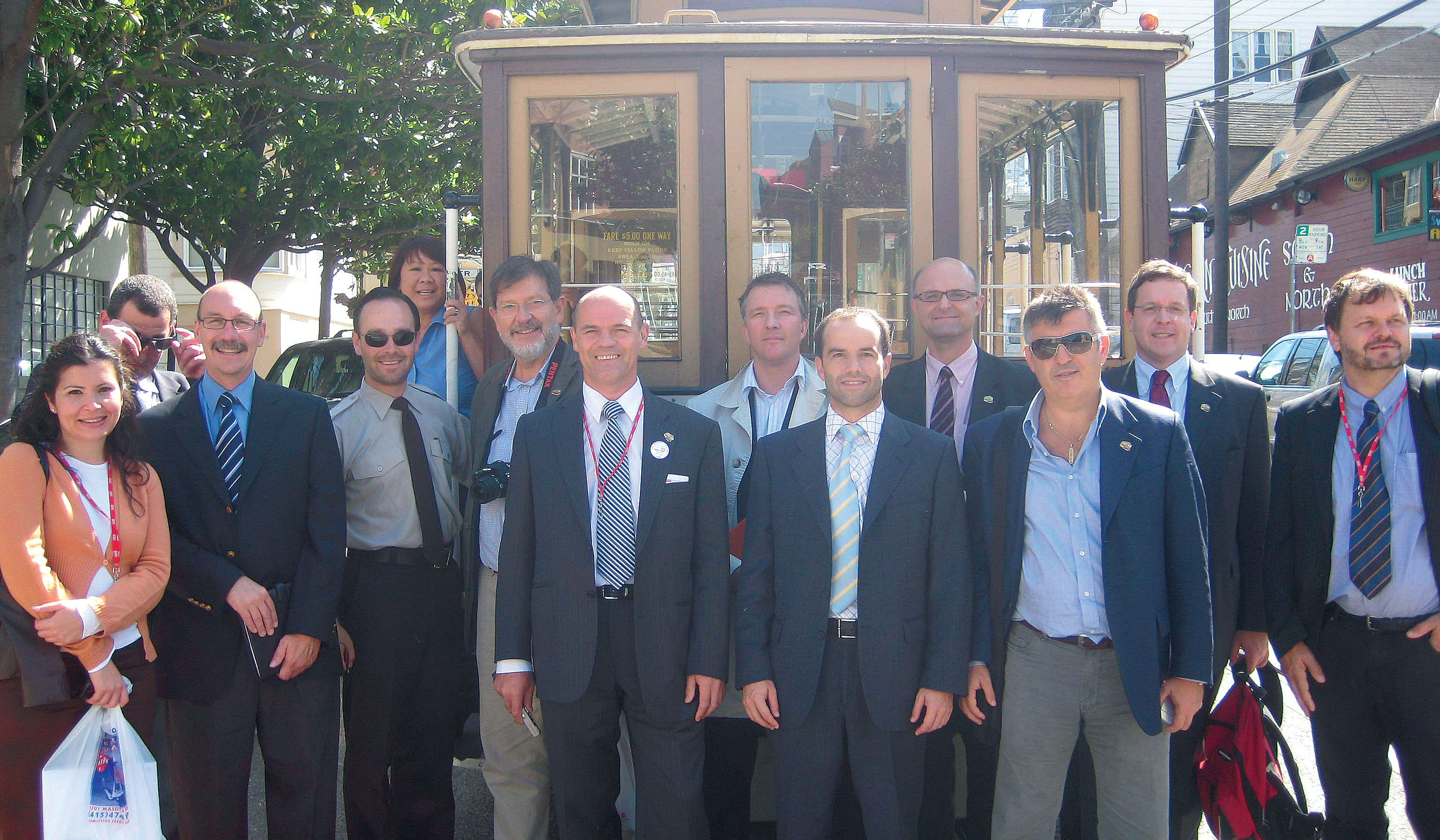
By Doug Jack
The International Union of Public Transport (UITP), headquartered in Brussels, Belgium, came together in 1885 when 50 representatives of the principal European tramway systems decided to meet and try to work a little closer with one another.
While tramways and local railway companies are part of the same industry, they have very few relations with one another. As a result, the diverse member companies have dealt with both administrative and technical questions in very different ways without the expected results. The group expressed the need for engineers and specialists to learn from the experience of colleagues in all tramway administrations.
In the earlier years of its existence, UITP was largely a European organization. As the international network and global advocate for transit and sustainable mobility, its membership now stands at more than 3,400 members in more than 90 countries around the world.
While many of the members of UITP are still transit authorities, the organization has extended its reach to include vehicle manufacturers, suppliers, consultants and research institutes involved in the industry. It has several categories of membership. I have been a personal member for many years and find that UITP brings excellent value. The library facilities in Brussels are very comprehensive and accessible online for members.
The Queen knighted UITP President Sir Peter Hendy, CBE of Transport for London, for masterminding the organization of transport for the London Olympics and the Paralympics in 2012. Public transport played a major and efficient role in carrying athletes, officials, the media and spectators to all the various venues. More than 1,000 buses were in service every day, in addition to maintaining normal services in the capital.
UITP Secretary General Alain Flausch, the former CEO of the Brussels transit agency who took his post when Hans Rat retired, worked very hard to extend the global reach and influence of UITP. He’s set up a number of regional divisions around the world.
UITP is best known for the major Congress and Exhibition it organizes every two years. At the 60th meeting in May in Geneva, Switzerland, more than 3,000 delegates attended to discuss a very wide range of topics and exchange ideas. A wide variety of exhibitors keen to display their latest technology filled the two large adjacent halls. Many visitors are top decision-makers, in charge of multi-million dollar budgets.
Previous UITP Congresses and Exhibitions were hosted in Dubai, Vienna, Helsinki, Rome, Paris, Stuttgart, and as far afield as Sydney. In 2015, the venue will be Milan and I can now say the 2017 event will take place May 13 to 17 in Montreal, QB, Canada. Montreal might seem like a long way off, but preparations are already underway.
As a global organization, the official languages of UITP are English, French, German and Spanish, but other languages are used at regional events. It provides excellent translation services where required as well as superb multi-lingual publications.
UITP has collaborative agreements and excellent working arrangements with APTA, CUTA and ATUQ. Canada is well represented, with almost all large Canadian cities as members. Alain Flausch is keen to increase the membership base in the United States, and has put Lindsey Mancini in charge of that challenge.
She says there are already some members from the United States, which include New York, Washington DC, Phoenix, Salt Lake City, Long Beach, and the Massachusetts Bay Commuter Railroad. Member companies include Crane, Bombardier, Trapeze, Parsons Brinckerhoff, Clever Devices, ESRI and TRB.
UITP networks feature modal divisions. All bus authorities are automatically members of the Bus Division, which currently has more than 450 members. The chairman is David Martin, chief executive of Arriva, a wholly-owned German Railways operation headquartered in the United Kingdom. The Bus Division organizes regular events in various locations around the world for all members. These cover topics like vehicle design, safety, maintenance, training for young managers, passenger security and fare payment systems.
A seminar on savings in bus maintenance and operations will be held in Bologna, Italy, in October. The Light Rail Committee met in Salt Lake City in September and a training program for managers in New York is set for May 2014. The eighth International Bus Conference takes place in Rio de Janeiro in November 2014.
UITP also works closely with bus manufacturers and the major component suppliers. It led the European Bus System of the Future (EBSF) to study future transit design, taking into account bus stops, right of way in traffic, ease of passenger entry and exit, and real-time information at stops and vehicles.The project first launched with a number of highly futuristic artists’ impressions. Some were impractical. For instance, the very limited seating and large areas of glass would have never complied with European manufacturing regulations.
The manufacturers’ prototypes were much more practical. The most innovative vehicle came from Volvo, whose engineers carefully studied passenger flow in order to minimize downtime. The EBSF project has now moved on to the implementation stage.
UITP has mounted its campaign PTx2 with the objective of doubling the use of public transport by 2025. It’s hard to get people out of their cars and onto public transport. It takes courageous politicians to introduce restrictions like congestion charging, as in London and Stockholm. It also means that bus services have to be very frequent, with modern vehicles that have minimal emissions.
Lindsey Mancini is very keen to increase the amount of members from the United States. She says some joint initiatives with APTA are under discussion. She believes that American members will benefit from all the services and experience that UITP can offer. To find out more, contact her directly at lindsey.mancini@uitp.org.
Doug Jack is with Transport Resources in the United Kingdom.
